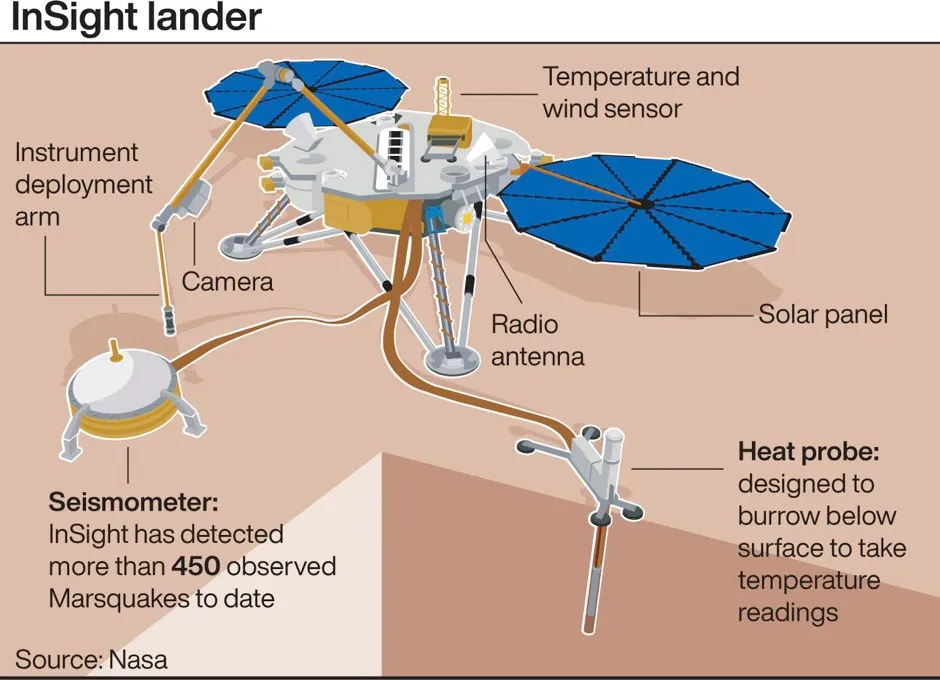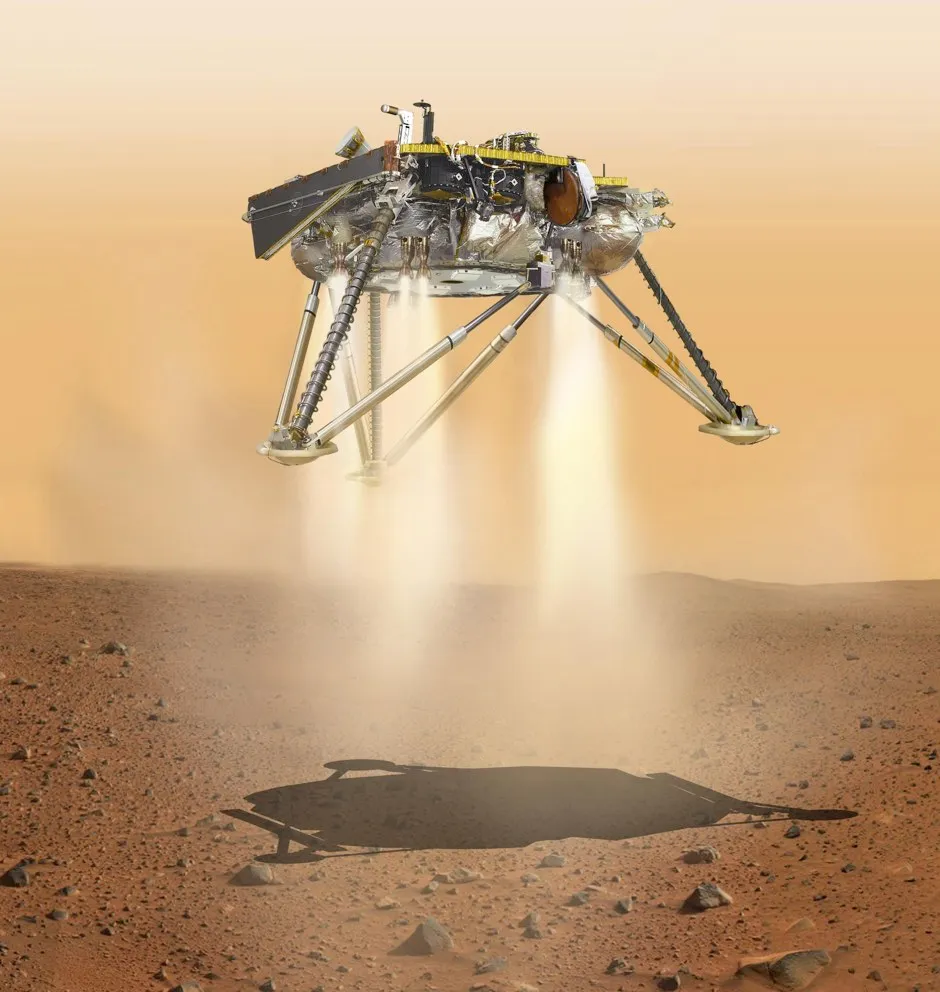- NASA's InSight probe confirms that Mars' quakes are caused by the movement of tectonic plates.
- InSight has detected more that 450 quakes on Mars since it arrived in November 2018.
- The probe also finds that the local magnetic field is 10 times stronger than expected.
A NASA spacecraft sent to study the deep interior of Mars has confirmed the planet to be seismically active, or in other words, prone to quakes.
The spacecraft, called InSight, successfully touched down in the Elysium Planitia region of the Red Planet in November 2018 after travelling 300 million miles through space for almost seven months.
Scientists say understanding more about the seismic activity of planets other than Earth could reveal clues about how the Solar System formed.
Dr Bruce Banerdt, InSight principal investigator and lead author on one of the studies, said: “We finally have, for the first time, established that Mars is a seismically active planet.”
Read more about the InSight mission:
- InSight: what NASA's mission to Mars could find inside the Red Planet
- More InSight selfies from the surface of Mars, please...
- NASA's InSight digging into Mars after 7-month setback
The first so-called “Marsquake” was recorded by InSight’s onboard sensors in April 2019. Since then, it has detected more than 450 quivers, much smaller than anything that would be felt on Earth.But two of them were big enough for scientists to be able to trace them back to their source.They came from a geologically active area known as Cerberus Fossae, around 1,000 miles east of Elysium Planitia.

Researchers say this provides strong evidence that seismic activity on Mars is not only a consequence of the cooling and shrinking of the planet but also caused by tectonic plates running into each other or moving apart.The seismic energy released on Mars is something between that of the Earth and the Moon, the researchers said.
Dr Domenico Giardini, of ETH Zurich in Switzerland and lead author on one of the studies, added: “Marsquakes have characteristics already observed on the Moon during the Apollo era, with a long signal duration (10 to 20 minutes) due to the scattering properties of the Martian crust.”
The scientists hope reading the seismic waves on Mars will reveal information about what the planet’s interior looks like and how it is changing.
The findings also suggest a local magnetic field at the landing site that is 10 times stronger than anticipated.In addition, the researchers found Martian weather to be similar to that of Earth but with key differences, such as stronger daily atmospheric pressure and temperature fluctuations.

Dr Don Banfield, of the Centre for Astrophysics and Planetary Science at Cornell University in the US and a lead author on one of the studies, told the PA news agency: “The atmosphere is so thin that it can heat up and cool down much faster than Earth’s. At night, it cools to as low as about -95°C, while in daytime, it reaches temperatures near 0°C."
Evidence of dust devils, which are whirls of Martian soil whipped up by the wind that spin like a tornado at nearly 60mph, were observed a month after InSight touched down on Mars.
Read more about Mars:
The team also detected a phenomenon known as “gravity waves”, which Dr Banfield described as “buoyancy oscillations of air parcels also observed regularly on Earth”.He told PA: “We are still working to understand what these waves can teach us about Mars. This will likely receive lots of attention over the coming years.”
Preliminary findings from InSight’s first 10 months on Mars are published in a series of papers in Nature research journals.The £633 million NASA mission is expected to continue for another year.
Reader Q&A: Do all planets have magnetic fields?
Asked by: Daniel J Buhs, US
No, not all planets have magnetic fields. The four gas giants have extremely strong magnetic fields, Earth has a moderately strong magnetic field, Mercury has an extremely weak field, but Venus and Mars have almost no measurable fields.
Planetary magnetic fields are formed by the interaction between the convection of interior conducting material (molten rock and metal) and the planet’s own rotation. Mercury’s field is weak because it rotates so slowly. Venus doesn’t have an appreciable field because there appears to be little convection in its molten interior. Mars doesn’t have an appreciable field – although it did in the past – because its interior has solidified.
Read more: